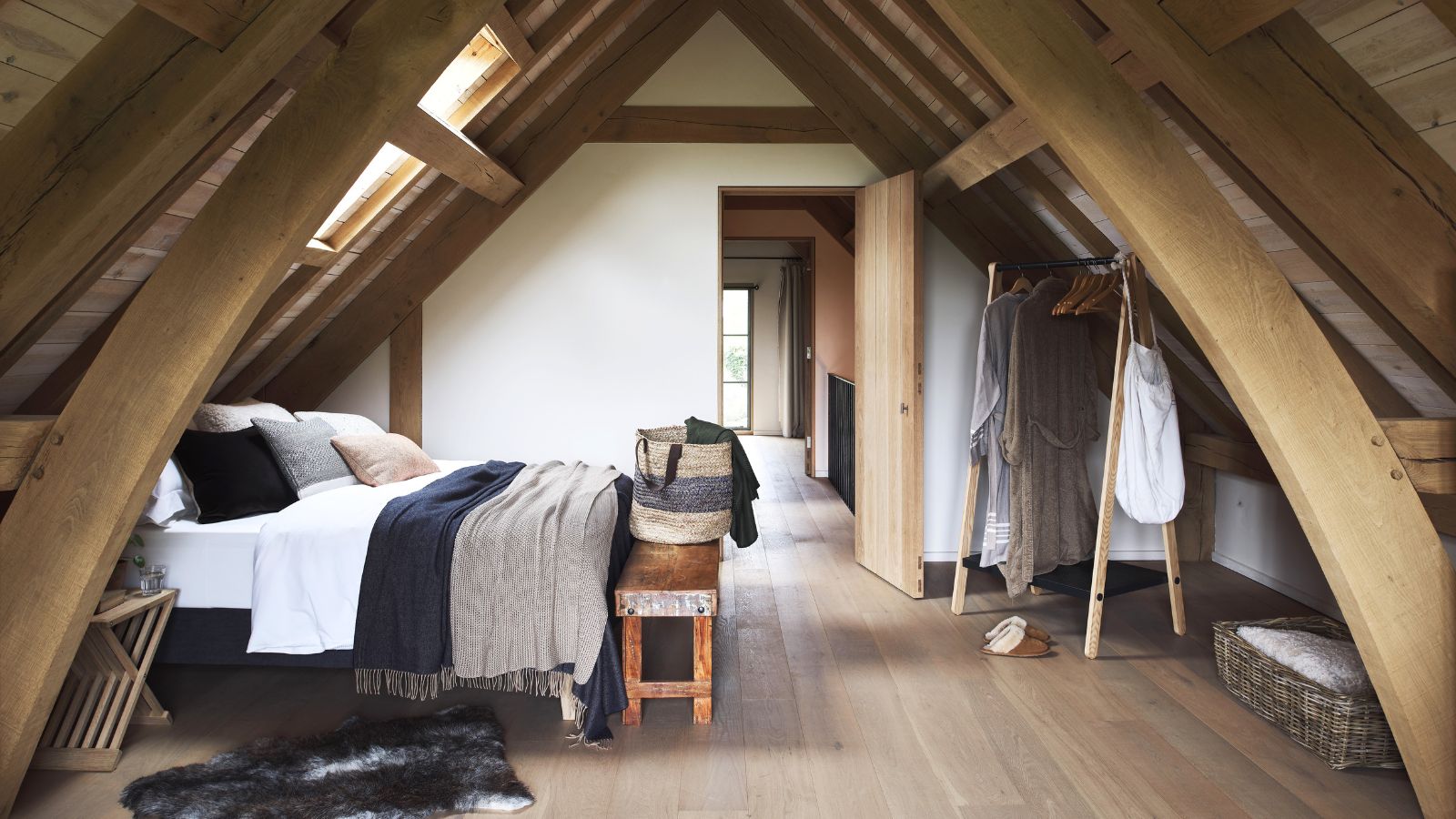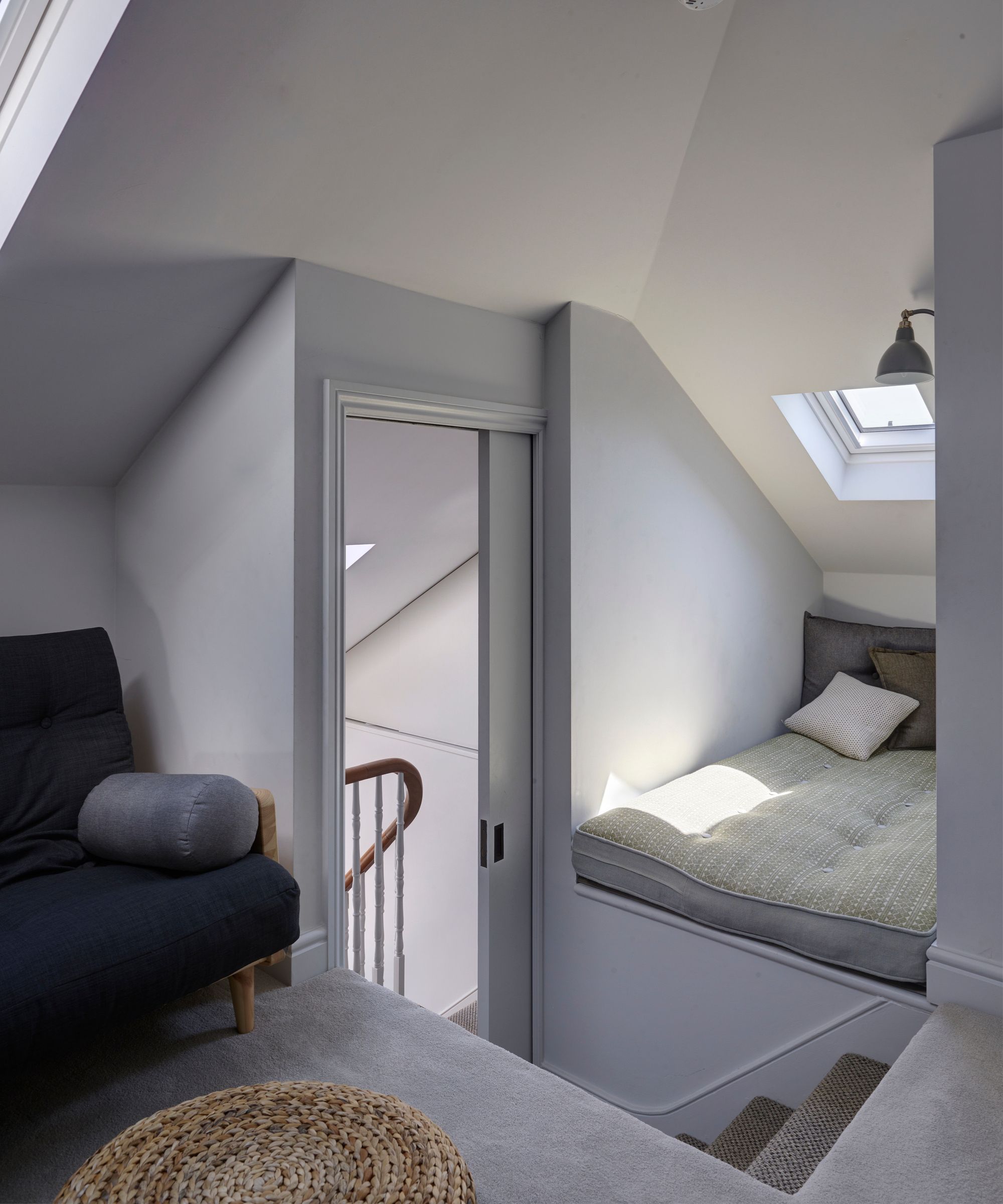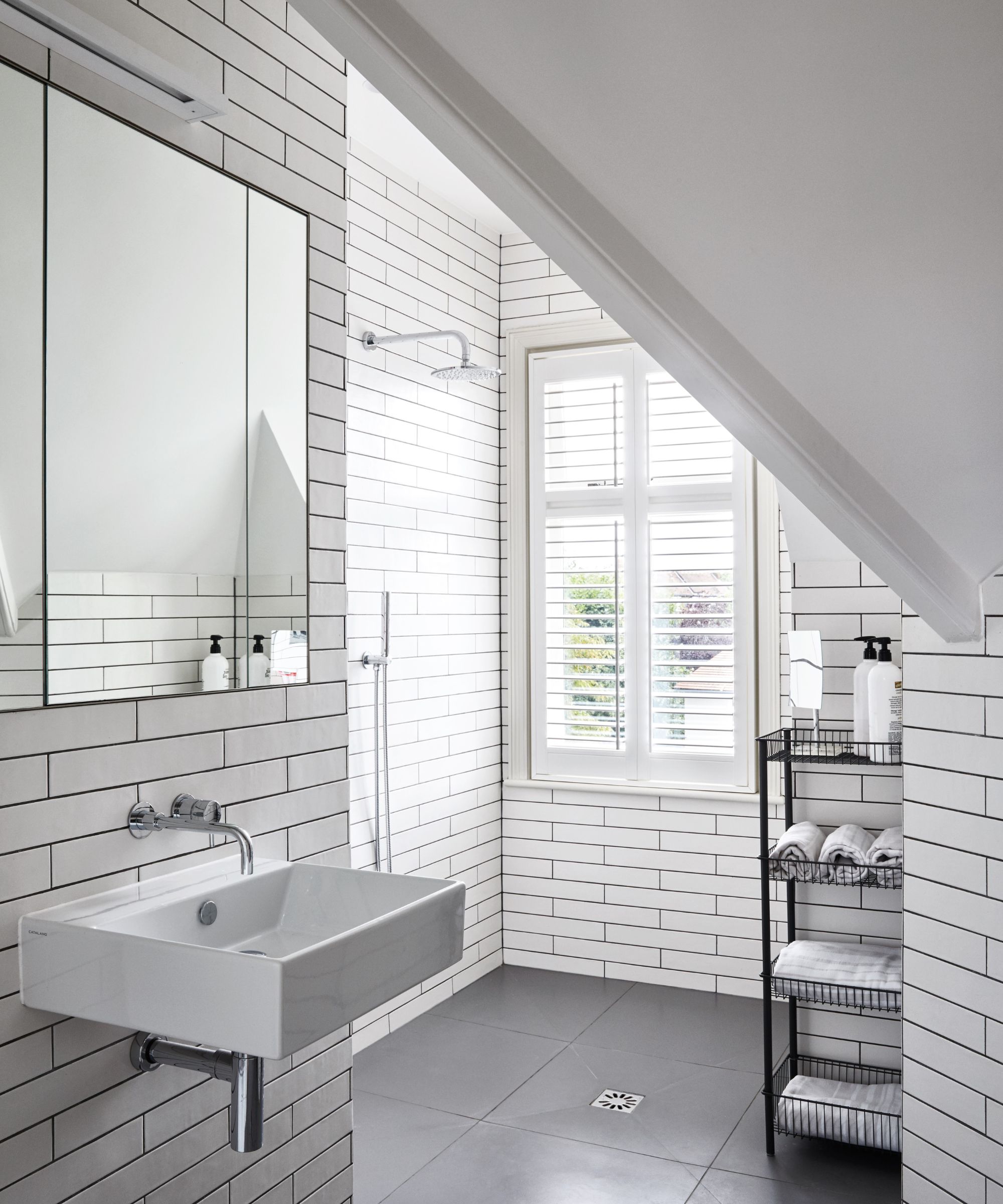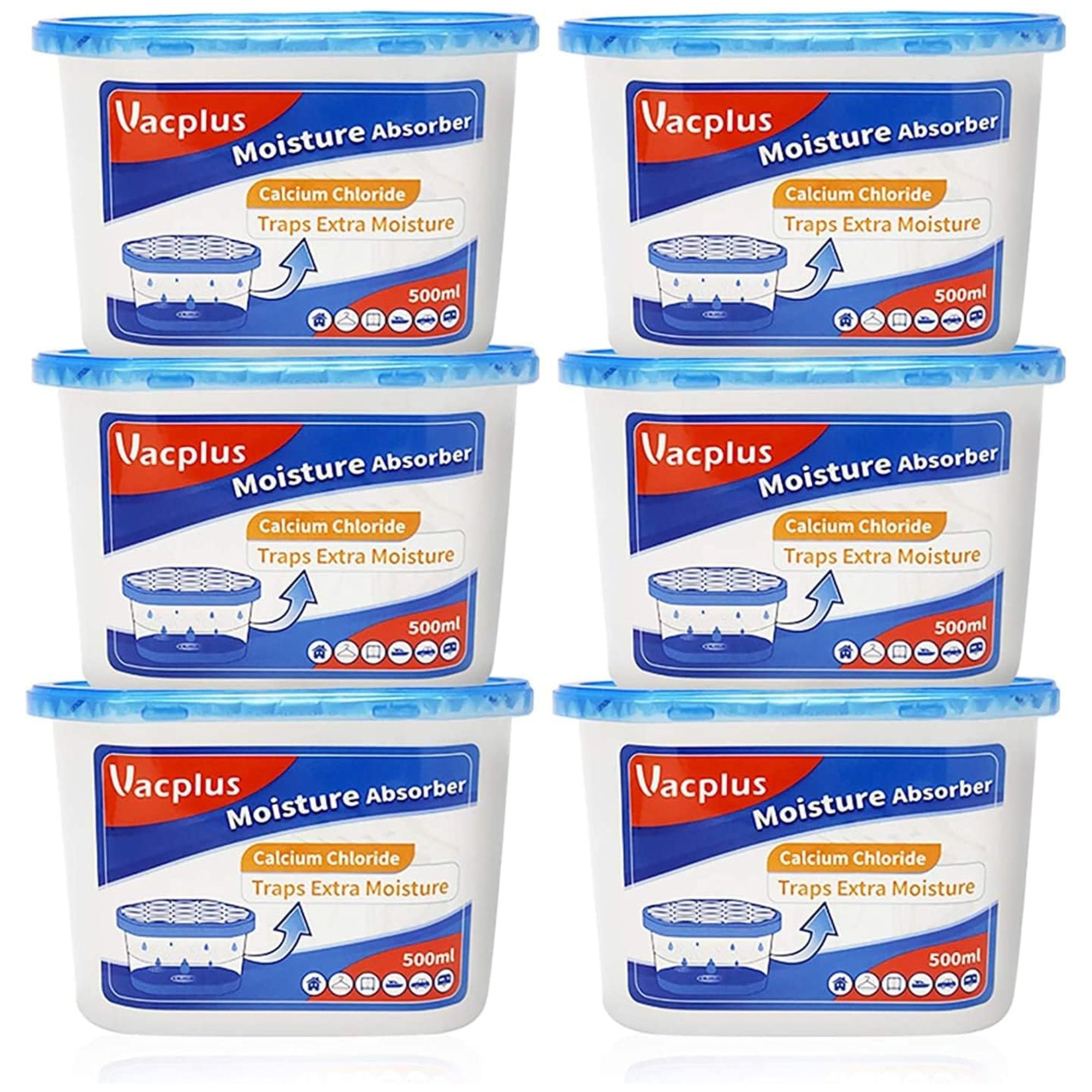
Your attic is one of the best storage spots around the home, but how do you get rid of that musty smell?
Most importantly, a musty attic may well be indicating moisture problems, so it's crucial to tackle the issue at the source to prevent mold, mildew and damage.
Here, HVAC pros share their tips on how to banish musty smells, from improving ventilation to checking your insulation.
Why do attics smell musty?
First things first, it's important to know exactly why your attic might be smelling musty to begin with.
Josh Mitchell, HVAC technician at AirConditionerLab, explains, 'Musty attic smells usually come from trapped moisture, limited airflow, and materials that absorb dampness and odors. These create the smell and make it stick around.
'In most cases, attics don't have enough airflow to remove warm, humid air, especially in homes without balanced ventilation. When warm air from inside the house rises into the attic and can't escape, it condenses on cold surfaces like rafters and roof sheathing.
'That moisture feeds mold, mildew, and bacteria, all creating that damp, stale smell. If you smell it, there's already a moisture problem in progress.'
And, as Lane Martin, co-founder of Modern PURAIR, adds, the musty smell can also come from old dust and debris that's been sitting untouched for a prolonged period of time. This is worsened when materials like wood or stored boxes hang onto that stale, damp scent. Here's how to get rid of it for good.
1. Improve ventilation

As Josh says, by far the quickest, easiest, and most effective way to get rid of musty smells is to ventilate the attic.
He explains, 'Many older homes either lack the right combination of intake, like soffit vents, and exhaust, like ridge or gable vents, or the vents are clogged with insulation, dust, or even bird nests.
Adding or unblocking these vents can help remove hot, damp air before it turns into condensation. I often recommend installing a powered attic fan [such as the Gable Mount Power Attic Ventilator available at Amazon] that activates when the temperature or humidity rises for homes in humid regions. That pulls air through the space and helps keep it dry.'
You can also, as Lane adds, use a small best fan, such as the Honeywell Turbo Force Power Table Fan available at Walmart.
'This makes the space much less inviting for mold and mildew,' he says.
However, if you do go for the fan option, make sure you're around to keep an eye on it. Running electrical items such as dehumidifiers and fans without supervision can pose a fire risk.
2. Clean and remove moisture sources

Next, cleaning is a must. You'll need to get rid of mildew and mold first.
'Mold and mildew often grow on roof sheathing, beams, and even cardboard boxes or stored furniture,' says Josh. 'Spraying wood surfaces with a mold cleaner that uses hydrogen peroxide or a mold enzyme is safer than bleach and works well for porous materials.'
For this, Glenn Wiseman from Top Hat Home Comfort Services recommends using the Zep Mold Stain and Mildew Stain Remover available at Amazon, or the Old Dutch Multi-Purpose Bleach, also available at Amazon, although it's important to note that this won't get rid of black mold for good, and more extreme measures, like calling in the pros, might have to be taken.
This is especially important, advises Lane, if you see a lot of mold or aren't sure how far it's spread. 'Make sure to dry the area after cleaning,' adds Josh. 'If it stays damp, the smell will come back.'
Then, says Glenn, 'Sweep, vacuum and clean surfaces with the Spray Nine Heavy Duty Cleaner, Degreaser & Disinfectant available at Amazon, and use odor-neutralizing sprays, such as the Nilodor Air Freshener and Odor Neutralizer, also available at Amazon, or natural remedies like baking soda or vinegar.' Vinegar can also be used to kill mold.
3. Use a dehumidifier or passive moisture absorber

To get rid of musty smells in an attic, it's also a good idea to invest in the best dehumidifier you can. This will help prevent condensation on your ceiling, too.
'If your attic has an electrical outlet and isn't too large, running a compact dehumidifier for a few weeks can help dry out the space quickly,' recommends Josh.
'I often suggest moisture absorbers like hanging calcium chloride bags [such as the Vacplus Moisture Absorbers available at Amazon] or desiccant tubs for attics without power. These can help pull humidity out of the air in small or enclosed areas like attic crawlspaces or under eaves.'
There are also plenty of DIY dehumidifiers you can try, like charcoal, silica gel, and rock salt.
4. Check your insulation

HVAC expert Lane continues, 'Insulation's another thing to check. If it’s old or has absorbed moisture, then it might need replacing. Fresh and dry insulation can go a long way in clearing the smell.'
In particular, says Josh, fiberglass batts and cellulose are the types of attic insulation that can absorb moisture if there's a roof leak or ventilation issue and become a hot spots for mold.
'If the insulation has gone flat, smells musty, or looks discolored, replacing it with new material can make a big difference in air quality,' he advises. 'Fiberglass can absorb and trap odors over time, even if it looks dry.'
5. Seal air leaks and address roof problems

Finally, warns Josh, high home humidity in your attic isn't just caused by outdoor air.
'Warm air from inside the home can leak into the attic through gaps around attic hatches, recessed lighting, bathroom exhaust vents, and HVAC ductwork. That warm air contains moisture and turns into condensation when it hits the cold roof deck.
'Sealing these openings with foam, caulk, or weatherstripping [such as the MAGZO Weather Stripping Door Seal available at Amazon] helps stop that process.
'Also, inspect for roof leaks,' and make sure you take the time to fix any ceiling leaks.
'Flashing around chimneys and vents, missing shingles or cracked boot seals around plumbing stacks can all let water in slowly and contribute to the musty smell,' adds Josh.
Ongoing prevention

As Josh says, 'Once you've dealt with the source, it's important to prevent the problem from coming back.'
To do so, keep vents free of insulation and open year-round, which is an easy way to ventilate your home without increasing your energy bills, and inspect the attic at least twice a year for musty smells, signs of mold and moisture.
'If your area is humid most of the year, consider installing a permanent attic fan or whole-house dehumidifier that's ducted into the attic space,' he adds. 'Even a five to ten percent lower humidity makes a difference in mold prevention,' which is why it's so important to maintain the best humidity levels for a home year-round.
What to shop
All prices were correct at the time of publication.

This bestselling, portable and compact dehumidifier extracts up to 16 oz of water a day, and features an auto shut-off function to prevent overflowing.

These moisture absorbers are efficient, small, and both fuss and fragrance-free. They're suitable for use all around the house, from your bathroom to bedroom, and basement to attic, and don't need you to keep an eye on them when in use.

Keep an eye on moisture levels in your attic with this handy hygrometer, which refreshes every ten seconds and features a compact LCD display with large, easy to read numbers.
FAQs
Can a house smell musty without mold?
Yes, your house can smell musty without mold. Bad odors can also be caused by a need to reduce your home's humidity, poor ventilation, or the presence of other types of microorganisms, such as bacteria, which thrive in damp environments.
Meet our experts
Once you've tackled your attic, you may need to get rid of musty smells in a bathroom, get rid of musty smells in a bedroom, and get rid of musty basement smells, too.







